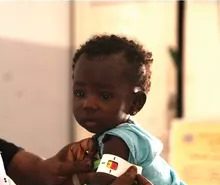Sudan: Famine Prevention Plan 2024 – Through Accelerated Mitigative Actions: Deterioration of Food Insecurity and Malnutrition

The Integrated Food Security Phase Classification (IPC) results for Sudan delivered in late 2023 depicted a dire picture of increasing food insecurity and malnutrition across Sudan, particularly in areas hit by conflict and access constraints. Those concerns have been confirmed in various reports since the release of the December 2023 IPC, including the FAO Crop and Food Security Assessment Mission (CFSAM), which reported significant decreases in cereal production compared to 2022, the WFP Comprehensive Food Security and Vulnerability Assessment (CFSVA) and the release by FEWSNet of its Food Security Outlook from March to September 2024 that includes a famine warning for some areas of the country hardest hit by conflict. Given the current conflict dynamics, the situation is expected to worsen in the coming months, which would potentially lead to a more formal “Famine Likely” warning based on expedited IPC results.
On 29 March 2024, an IPC alert for Sudan was released outlining the dramatic situation of food insecurity in country: “This [alert] has been developed based on the review of the latest evidence available and issued to express major concern regarding the deteriorating situation; and advocate for stakeholders to act immediately to prevent famine.” IPC outlined that since the results released in December 2023, “there has been a significant escalation of the conflict among armed factions and a rise in organized violence beyond the initial IPC assumptions made in previous analyses” (IPC March 2024).
As a preparatory measure, this famine prevention operational plan responds to the strategic direction outlined by the HCT. It is a prioritization of the 2024 Humanitarian Needs and Response Plan and seeks to build on exiting and previous physical presence and recent efforts to align the coordination with realities on the ground. The approach is based on experience in other successful famine prevention operations adapted to the Sudan context. This plan is based on integrated responses led by Food Security and Livelihoods, Nutrition, Health and Water, Sanitation and Hygiene (WASH) clusters with important contributions by other clusters, all of which is underpinned by an emphasis on the Centrality of Protection guided by the Protection Cluster and emphasizes the importance of mainstreaming crosscutting themes such as accountability to affected populations (AAP), protection from sexual exploitation and abuse (PSEA) and gender-based violence (GBV) into the strategy.
The success of the plan, beyond the effectiveness of the geographic and coordination approaches, will depend on the ability of the operation to access hotspots and deliver the necessary quantity and quality of assistance, requiring the ongoing engagement efforts with the two main parties to the conflict and other armed groups. Additionally, the benchmarks and indicators outlined in the 3-month scale up will monitor its implementation. The success of the plan is contingent on the operation’s ability to access hotspots and effectively deliver the necessary quantity and quality of assistance. Recognizing the potential issuance of a formal “Famine Likely” warning in 2024, the strategic document aims to address immediate needs and mitigate the impending humanitarian crisis.
Sudan: Famine Prevention Plan 2024 – Through Accelerated Mitigative Actions: Deterioration of Food Insecurity and Malnutrition
The Integrated Food Security Phase Classification (IPC) results for Sudan delivered in late 2023 depicted a dire picture of increasing food insecurity and malnutrition across Sudan, particularly in areas hit by conflict and access constraints. Those concerns have been confirmed in various reports since the release of the December 2023 IPC, including the FAO Crop and Food Security Assessment Mission (CFSAM), which reported significant decreases in cereal production compared to 2022, the WFP Comprehensive Food Security and Vulnerability Assessment (CFSVA) and the release by FEWSNet of its Food Security Outlook from March to September 2024 that includes a famine warning for some areas of the country hardest hit by conflict. Given the current conflict dynamics, the situation is expected to worsen in the coming months, which would potentially lead to a more formal “Famine Likely” warning based on expedited IPC results.
On 29 March 2024, an IPC alert for Sudan was released outlining the dramatic situation of food insecurity in country: “This [alert] has been developed based on the review of the latest evidence available and issued to express major concern regarding the deteriorating situation; and advocate for stakeholders to act immediately to prevent famine.” IPC outlined that since the results released in December 2023, “there has been a significant escalation of the conflict among armed factions and a rise in organized violence beyond the initial IPC assumptions made in previous analyses” (IPC March 2024).
As a preparatory measure, this famine prevention operational plan responds to the strategic direction outlined by the HCT. It is a prioritization of the 2024 Humanitarian Needs and Response Plan and seeks to build on exiting and previous physical presence and recent efforts to align the coordination with realities on the ground. The approach is based on experience in other successful famine prevention operations adapted to the Sudan context. This plan is based on integrated responses led by Food Security and Livelihoods, Nutrition, Health and Water, Sanitation and Hygiene (WASH) clusters with important contributions by other clusters, all of which is underpinned by an emphasis on the Centrality of Protection guided by the Protection Cluster and emphasizes the importance of mainstreaming crosscutting themes such as accountability to affected populations (AAP), protection from sexual exploitation and abuse (PSEA) and gender-based violence (GBV) into the strategy.
The success of the plan, beyond the effectiveness of the geographic and coordination approaches, will depend on the ability of the operation to access hotspots and deliver the necessary quantity and quality of assistance, requiring the ongoing engagement efforts with the two main parties to the conflict and other armed groups. Additionally, the benchmarks and indicators outlined in the 3-month scale up will monitor its implementation. The success of the plan is contingent on the operation’s ability to access hotspots and effectively deliver the necessary quantity and quality of assistance. Recognizing the potential issuance of a formal “Famine Likely” warning in 2024, the strategic document aims to address immediate needs and mitigate the impending humanitarian crisis.



